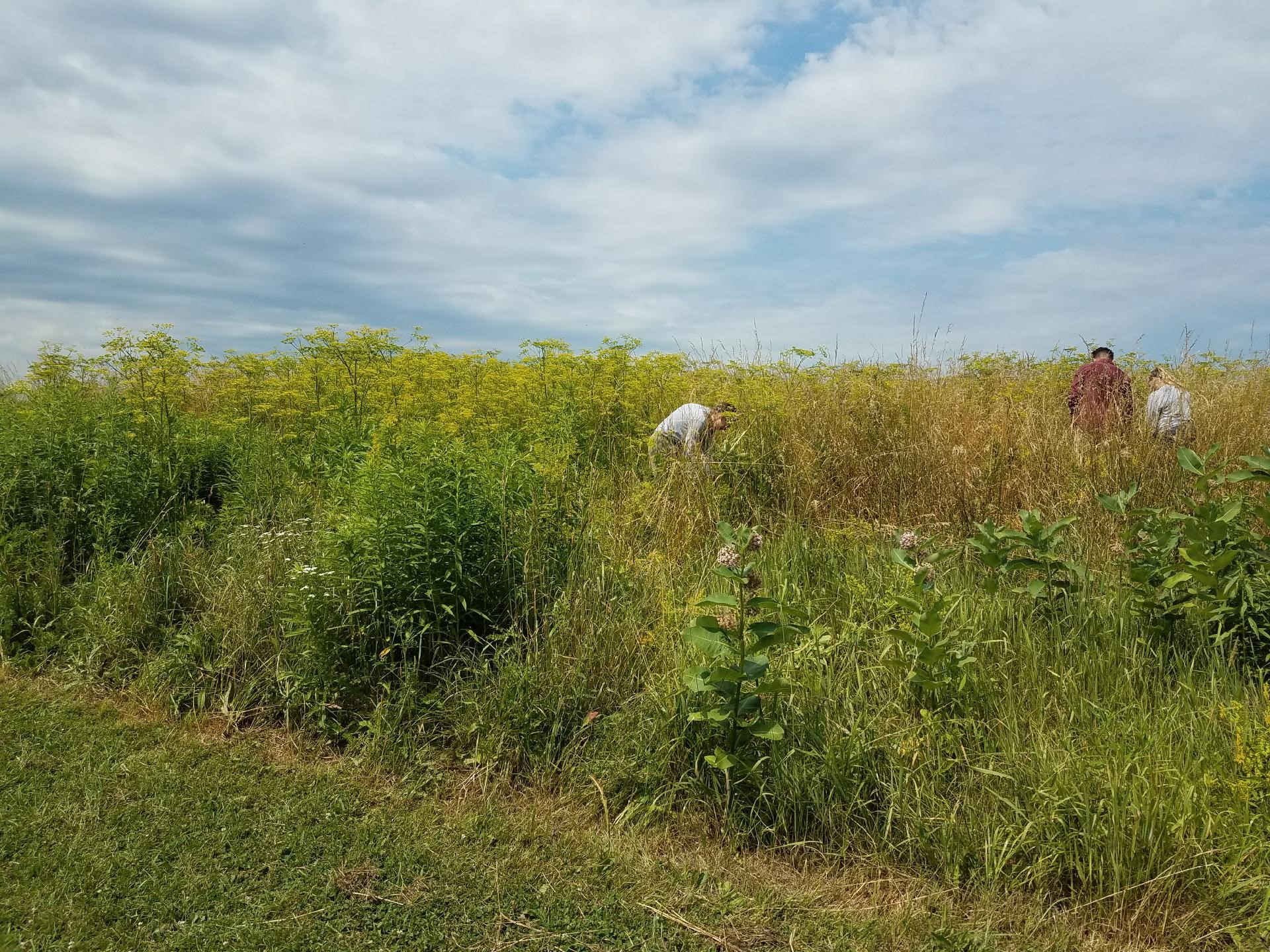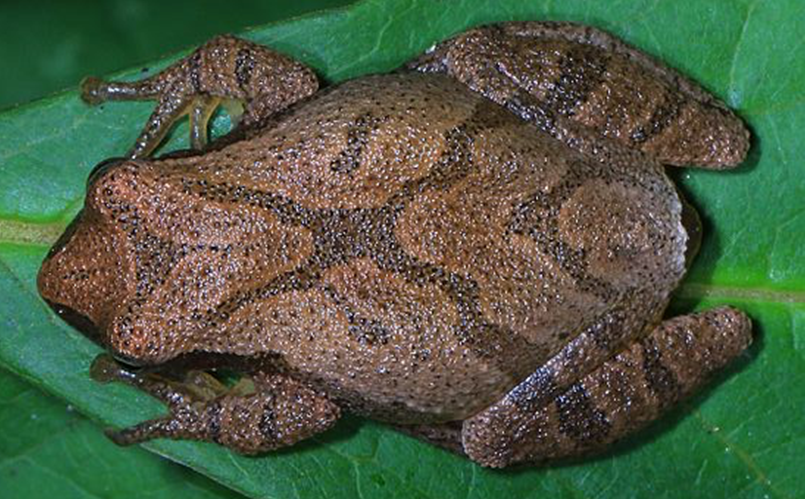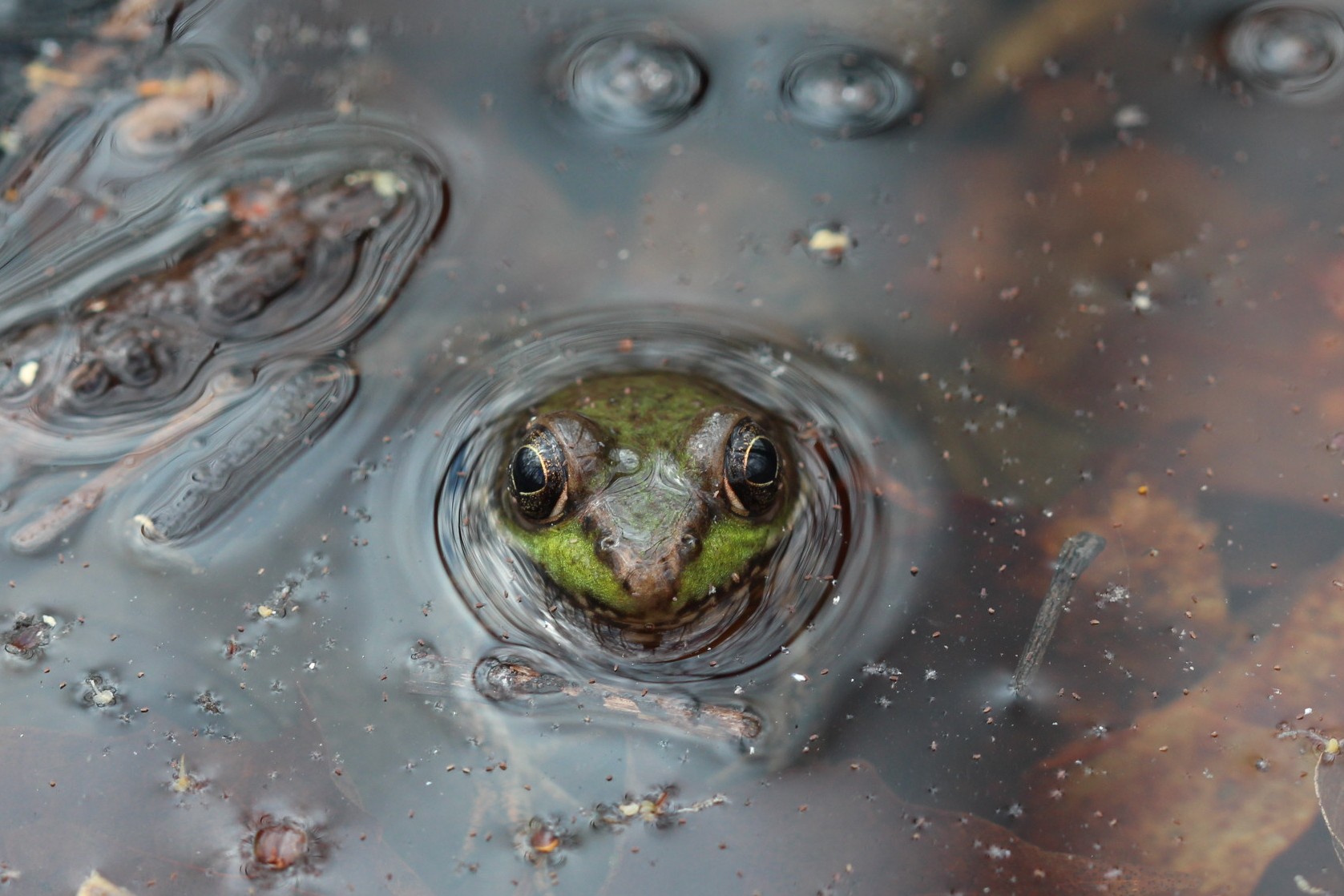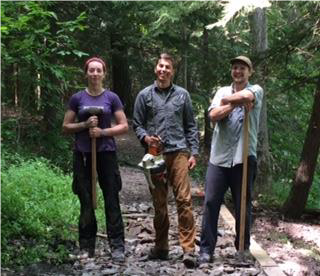As part of my duties as an Invasive Species Project Steward, it has been my pleasure to join the Forest Health Specialists in their fieldwork. The Forest Health Specialists travel to priority park lands throughout the region to survey and monitor for forest pests, with an emphasis on areas previously treated for pests and on early detection of emerging threats to forest health. Although our focus in these surveys have been hemlock woolly adelgid, southern pine beetle, and spotted lanternfly (see DEC website or email invasives@parks.ny.gov for more information), we see so much more in our state’s lush woodlands. Spending time in wild spaces and amongst such biodiversity ignites a sense of curiosity that no number of office supplies can replicate. Dendrology (the study of trees and shrubs), entomology (insect study) herpetology (the study of reptiles and amphibians), ornithology (bird study) – with all these -ologies everywhere you turn, how can you ever pick just one to invest your energy in learning about? The more time I spent hunting for the aforementioned pests, I found myself increasingly drawn to the study of one particular organism: mushrooms. Maybe I liked how they can be beautiful and disgusting, delicious and deadly, beneficial or parasitic, and all share a space within the field of mycology. Whatever the reason, I found them fascinating and had plenty of run-ins with them.

One particularly distinct and common mushroom is chicken of the woods, scientifically named Laetiporus sulphureus. It is also called sulfur shelf because of the sulfur-yellow color of the pores, and its overlapping disk-like growth form protruding from oak, hemlock and other trees like a shelf. Each lobe is an inch thick, up to 20 inches across and can weigh up to a pound apiece! It is very common in our neck of the woods- the specimen pictured here was found at Waterson Point State Park in the Thousand Islands, though I have also seen it at Minnewaska State Park, John Boyd Thacher State Park, and Harriman State Park.

Another fungus you may see protruding off a tree, often birch, is the hoof fungus (Fomes fomentarius), named as such for the hoof shape and hardness of the brown-ringed cap (Roberts and Evans, 383). It has also been called tinder polypore because “amadou,” the inner fibrous flesh, was historically used as tinder to start fires and cauterize wounds (Lincoff, 457).

Also in the polypore family, Polyporaceae, is the Cinnabar-red polypore (Pycnoporus cinnabarinus) pictured below. The distinct red caps are 1-5 inches wide and round, often growing on dead deciduous trees (Lincoff, 486). Another member of Polyporaceae is the violet toothed polypore (Trichaptum biformis). They have round, overlapping caps up to 3 inches wide with a leathery texture and are brown with purple, wavy margins. They are found by the hundreds on deciduous trees, and over time will diminish them into sawdust (Lincoff, 490)!

False turkey-tail (Streum ostrea) is another fungus often growing on downed deciduous trees, although not a member of Polyporaceae. Its name stems from often being misidentified for the fungus turkey-tail (Trametes versicolor), which is a polypore (Lincoff, 497). The species name ostrea is Latin for “oyster,” the shape of the tan, tough and papery caps, often tinted green with algae (Roberts and Evans, 438). Research indicates that they produce laccase, an enzyme used to break down contaminants.
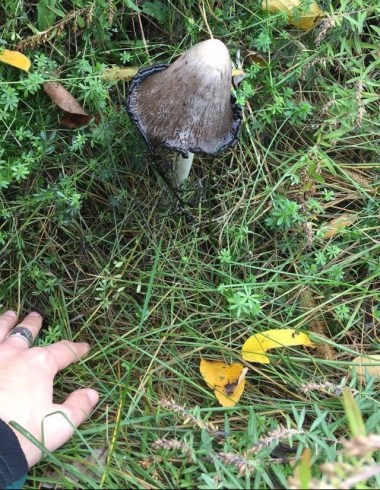
This common inkcap, Coprinopsis atramentaria, was found at Mills Norrie State Park along the Hudson River. The name atramentaria comes from the Latin word “atramentum,” meaning ink (www.first-nature.com). The French mycologist Jean Baptiste Francois Pierre Buillard, who first described the species and named it, realized that the gills turn to a liquid with age and can be used to make ink. The cap is light gray, thin and shaped like a partially opened umbrella with a smooth white stem and can be found growing on stumps, roadsides, and gardens.

Keep a lookout on your woodland adventures for the highly sought-after chanterelles (Cantharellus cibarius), also called golden chanterelles for their yellow-orange coloration. They have smooth stems that widen at the top to a funnel-shaped cap with gills on the underside and a smooth top with wavy edges. This is one of the best-known mushrooms and is exported commercially worldwide (Roberts and Evans, 476). The ones pictured here were found at Schunnemunk State Park in the Hudson Valley.
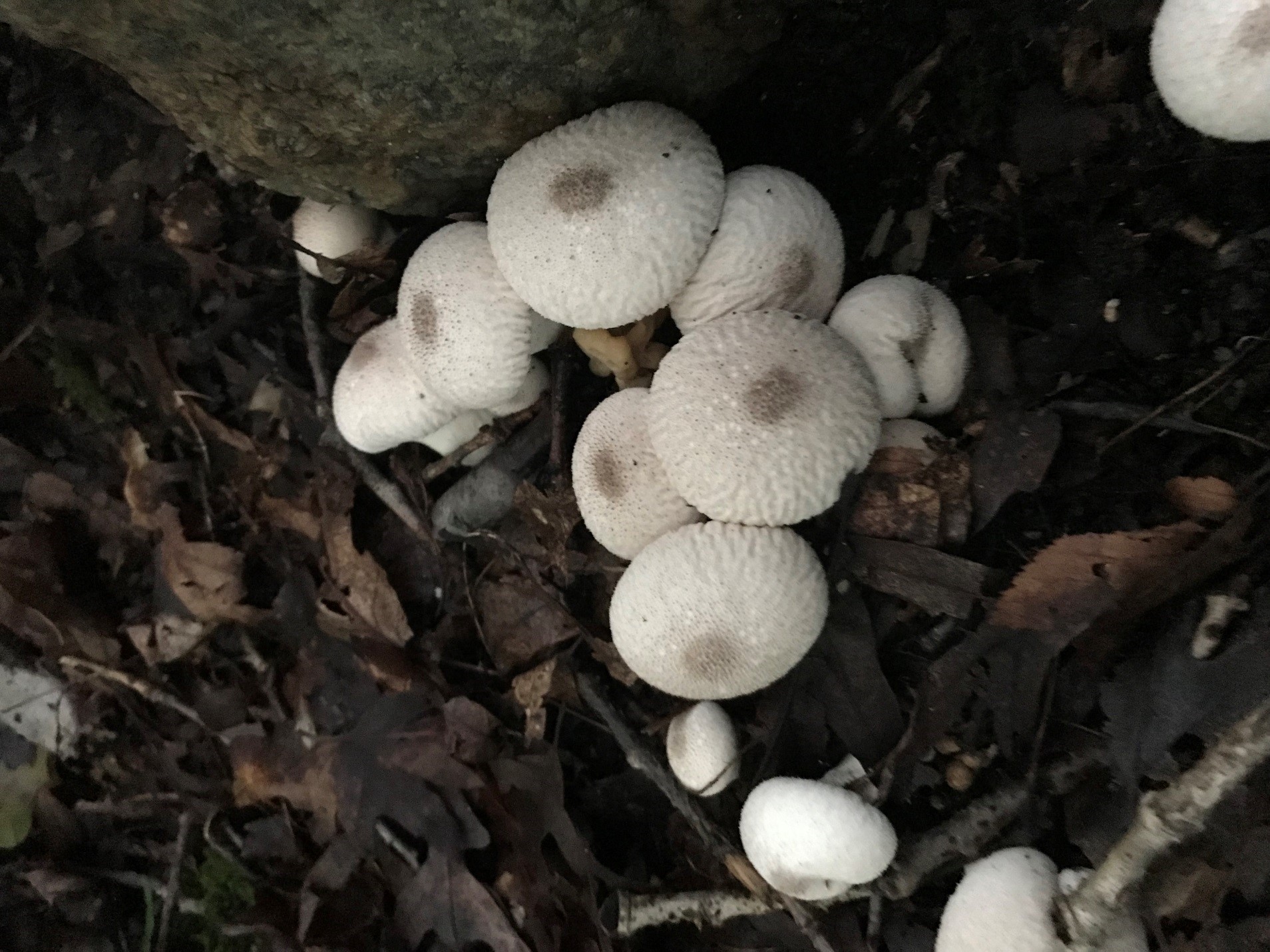
In your exploration of State Parks, you are likely to stumble upon puffballs, family Agaricaceae, growing in the leaf litter. They are round to upside-down-pear shaped, sometimes with a grainy texture and usually 3 inches tall and 2 inches wide. They are called puffballs because as they mature, a hole opens on the top of the rounded cap that enables the spores to puff out. Historically, they were used to seal wounds, start fires, and stun bees as we use smoke today. But be cautious around them, their spores are known to irritate the nose and eyes, and if breathed in excess can cause an allergic reaction in the lungs called lycoperdonosis (Roberts and Evans, 520). The puffballs pictured below were sighted at Taconic Outdoor Education Center in the Hudson Valley. The giant puffball (Calvatio Gigantea) is a particularly interesting variation that has been seen on State Parks’ land. As its name implies, they are round, smooth and typically 30 inches by 30 inches. The largest recorded, however, was up to 5 feet wide and weighed in at over 40 pounds (Roberts and Evans, 512)!
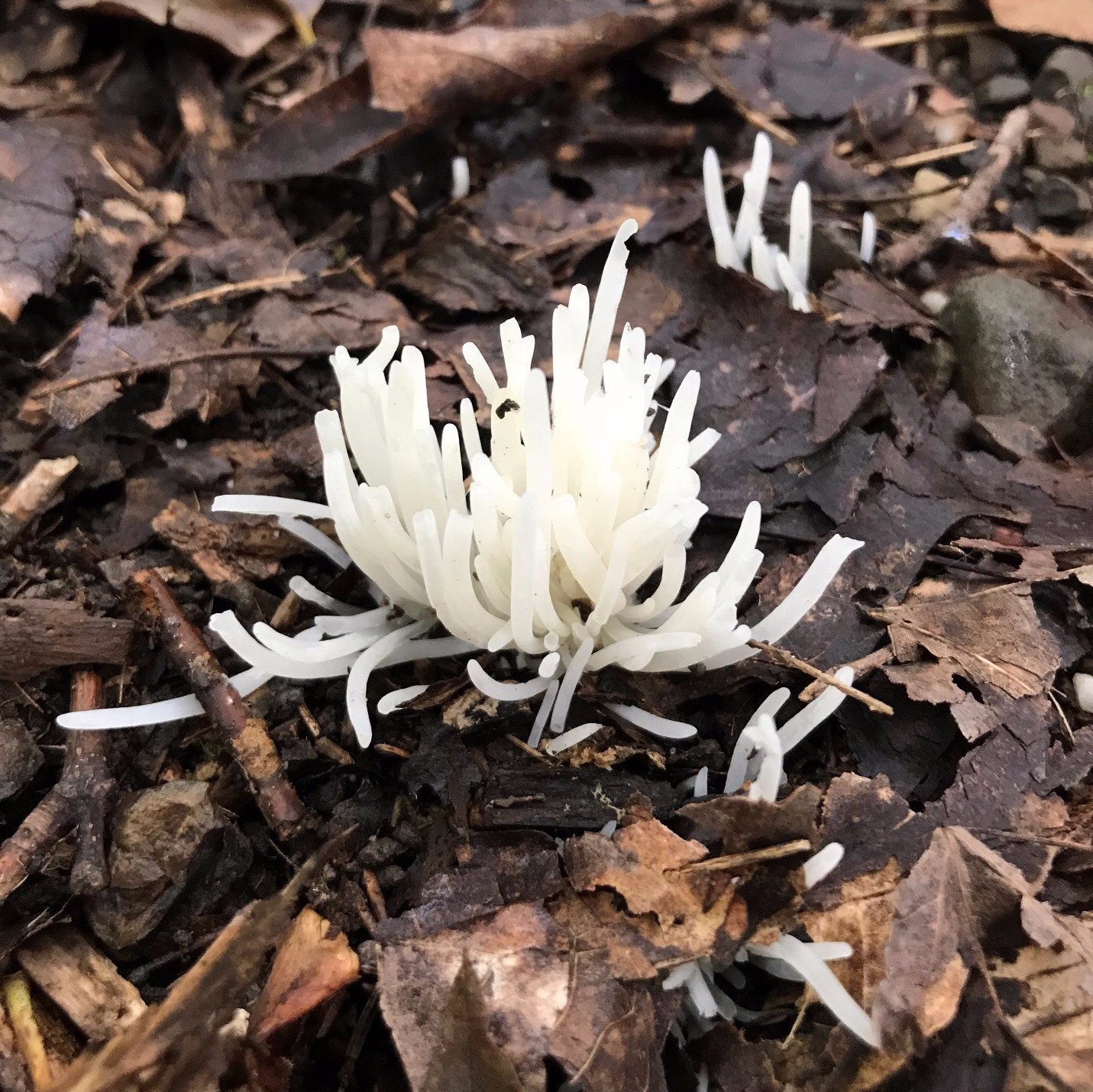
Then there’s the coral mushrooms, named for their resemblance to undersea coral colonies. These white spindles (Clavaria fragilis) were found growing in the leaf litter at Minnewaska State Park Preserve in the Hudson Valley. The species name fragilis pays homage to the extremely brittle nature of the fungus (Roberts and Evans, 486). It used to be called Clavaria vermicularis, white worm fungus because of its tubular white spines growing upwards in a cluster (Lincoff, 400).
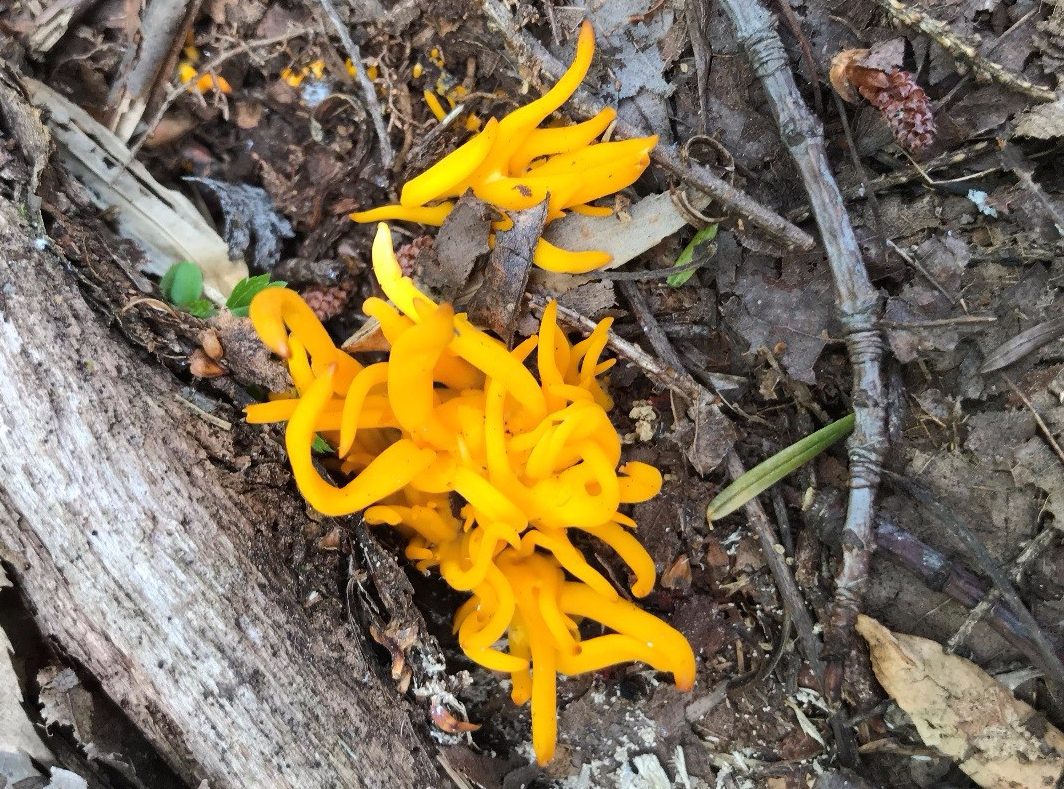
It’s relative, golden spindles (Clavulinopsis fusiformis) is also a saprotroph, meaning it feeds on dead matter like leaf litter (Roberts and Evans, 494). Golden spindles also grow in unbranched needles, but as the name implies, are yellow.

This white coral (Ramariopsis kunzei) was also found growing in the leaf litter of the forest floor at Minnewaska State Park. Unlike the spindles, the fruitbodies of the white coral are branched. There is still much to be learned about this species (Roberts and Evans, 504).
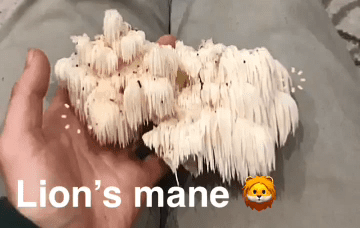
A much shyer mushroom, despite the name, is lion’s mane (Hericium erinaceus). It is also called bearded tooth, as it grows downward from trees or logs in a cluster of white spindles up to 3 inches long. Similar to human teeth, it yellows as it ages. In Asia it is called monkey head and is used to strengthen the immune system, available as a pill for stomach ulcers or as a tonic drink in a can (Roberts and Evans, 468). The cluster shown here was found at Minnewaska State Park.
Mushrooms like moisture and cool temperatures, so now is the time to seek them out. I am sure you will have no trouble finding them, and although they can be very tricky to identify, perhaps you may recognize some of the species featured here on the many trails located at our State Parks. Happy Mushroom hunting, but remember not to disturb them, as they are a much-needed member of the ecosystem.
Post by Sara Mitsinikos, SCA intern
References
“Coprinopsis Atramentaria (Bull.) Redhead, Vilgalys & Moncalvo – Common Inkcap.” Coprinopsis Atramentaria, Common Inkcap Mushroom, First Nature.
Lincoff, Gary H. National Audubon Society: Field Guide to Mushrooms. Alfred A. Knopf, 2000.
Roberts, Peter, and Shelley Evans. The Book of Fungi: a Life-Size Guide to Six Hundred Species from around the World. University of Chicago Press, 2011.




